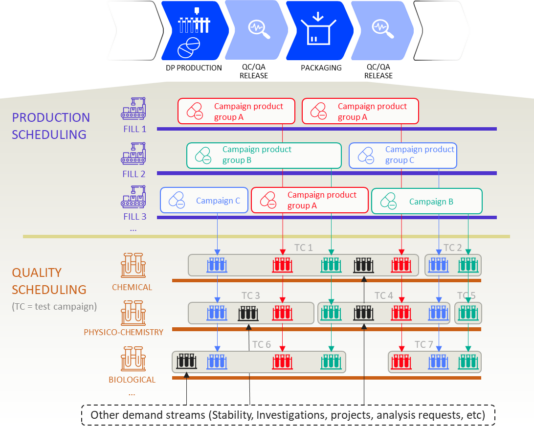
Product & tech transfer in a changing environment
In a constantly changing environment, network resilience is key. That is why network transfer project evaluations and the evaluation of the effectiveness of production nodes are an essential and continuous exercise for companies in order to reduce complexity, improve cost-effectiveness and enhance speed and agility.
Alongside these network (re-)design studies, companies want to drive their growth via mergers and acquisitions or decide to expand the use of external strategic collaborations.
The resulting changes from the above to the existing production network need to be implemented. That is where the product and/or technical transfer comes in, as the execution of these network and strategic decisions. While the manufacturing of a product can be moved from one existing plant to another, a technical transfer goes further and involves the actual move of a production line to a new location.
Often, these are complex programs that affect multiple plants and involve many departments. A complexity that is even higher when production is being outsourced to external manufacturers.
We would like to discuss the challenges and the approach of these transfer projects with two beecees from our Digital Operations squad, Anne-Cécile Van Hool and Judith Deltour, who are experienced in transfer programs in different industries.
What are the biggest challenges customers face in the execution of a network transfer project?
Judith: Every change in the production network has an end-to-end impact on that network and on the supply chain. Hence, network transfer projects require an end-to-end involvement from many functions across the company, such as planning, quality, technical operations and regulatory affairs. This requires “next-level” project management. While project management is of course always important, in transfer programs specifically, it is crucial to keep the end-to-end visibility focused on the project and scope and have the right platforms in place to connect with the impacted plants, markets and teams. Ensuring that the roles and responsibilities but also the handovers between the jobs involved are clearly defined upfront is a prerequisite for a successful project execution.
Anne-Cécile: Adding to the already complex setup of a transfer, several network optimization projects usually run in parallel. These interdependencies need to be monitored closely and project plans need to be aligned constantly to ensure a smooth transition and to avoid any supply disruptions or obsolete inventories. Risk management is also a critical part of transfer program management.
What can you tell us about the impact on supply chain management?
Judith: Keeping the supply chains agile is key. This means investing time in the design and implementation of a sometimes completely new supply chain with the right processes and capabilities in place, which can be considered a project on its own.
Anne-Cécile: A core supply chain planning activity in a transfer project is to develop and monitor an inventory plan, especially in the event of a so-called hard stop at the sending site. The different industries have their specific challenges to deal with. For example, in life sciences, receiving the approval to bring the impacted products to the market can take up to 24 months in some countries. So, a long transition period needs to be bridged. In the fresh food industry, there is sometimes a very short shelf life to manage. The long timespan of a transfer program in life sciences brings the additional challenge of changing market conditions: changes in demand, entering new markets or divestments or new interdependent projects that need to be dealt with.
Judith: But companies also tend to take the opportunity to reduce complexity by reviewing the product portfolio and delist products for example with very low sales. These products are then taken out of the scope and do not need to be transferred to the new plant.
How should companies organize themselves to tackle these challenges?
Anne-Cécile: The complexity of product transfers is typically managed by dedicated supply chain transfer managers, who are critical members of the end-to-end teams managing the products being transferred in the scope of the program. In fact, the need for dedicated supply chain transfer managers starts before the actual project execution. The expertise and network these roles typically have are critical for providing that end-to-end visibility on the scope of impacted plants, products and markets that is required for making the business case and getting the transfer project approved in the first place.
Why is E2E visibility so critical?
Judith: Providing this end-to-end visibility for all stakeholders is an important role of the SCTM throughout the project. In life sciences, for example, because of the many regulatory requirements, the full downstream production flow is impacted up to the markets. The complexity of different manufacturing sites, packaging sites and impacted markets makes it challenging, especially when external manufacturers are part of the network. This is no different in the food industry, although they do not always need to qualify all impacted products.
Anne-Cécile: To get to this end-to-end overview, the supply chain transfer managers will set up a platform to connect with their local and global stakeholders, such as IT and master data, distribution and (site and global) planning, but also the local companies or markets impacted by the program. These platforms will be used throughout the duration of the entire project to have a single source of truth for all stakeholders and to support all activities needed for successful execution. The supply chain transfer manager is also accountable for the implementation and integration of the (partially) new supply chain and performs a thorough supply chain assessment and fit-gap analysis. It is also the SCTM who oversees the setup of the necessary systems and master data and specific shipping requirements
Judith: This refers back to installing the right processes and capabilities. It is clear that this also means people. We can support our customers with a targeted change and communication plan and make sure people are well informed and trained to make the transfer project a lasting success.
Are there measurable objectives in product transfer projects?
Anne-Cécile: The two most important KPIs for the supply chain transfer manager are to have no supply disruptions and to avoid obsolete inventories. These KPIs measure the supply chain and planning performance at the end of the program. The ultimate goal is to guarantee the successful commercial implementation of every SKU in every market.
Why should companies trust Bluecrux as a partner in their product transfer programs?
Judith: Bluecrux has a profound knowledge of the different industries and their specifics and challenges. We support companies during the entire journey—from the network design study up to the execution of the resulting transfer projects.
Our people bring solid supply chain and operations knowledge as well as change and project management expertise to the customer team, which they can leverage on for the implementation of best practices, the setup of the required communication platforms, and the development of tools and dashboards to manage the program efficiently.
It is important to note that we co-develop. The methodology and framework we have in place to execute transfer projects is something we developed together with our customers.
The long duration of a transfer program, especially in life sciences, often means changes to the customer team. As within Bluecrux we have people with the right experience and trained in the methodology, we can guarantee continuity to our customers over the duration of the project.
Want to know how Bluecrux can support your network transfer projects? Get in touch!

